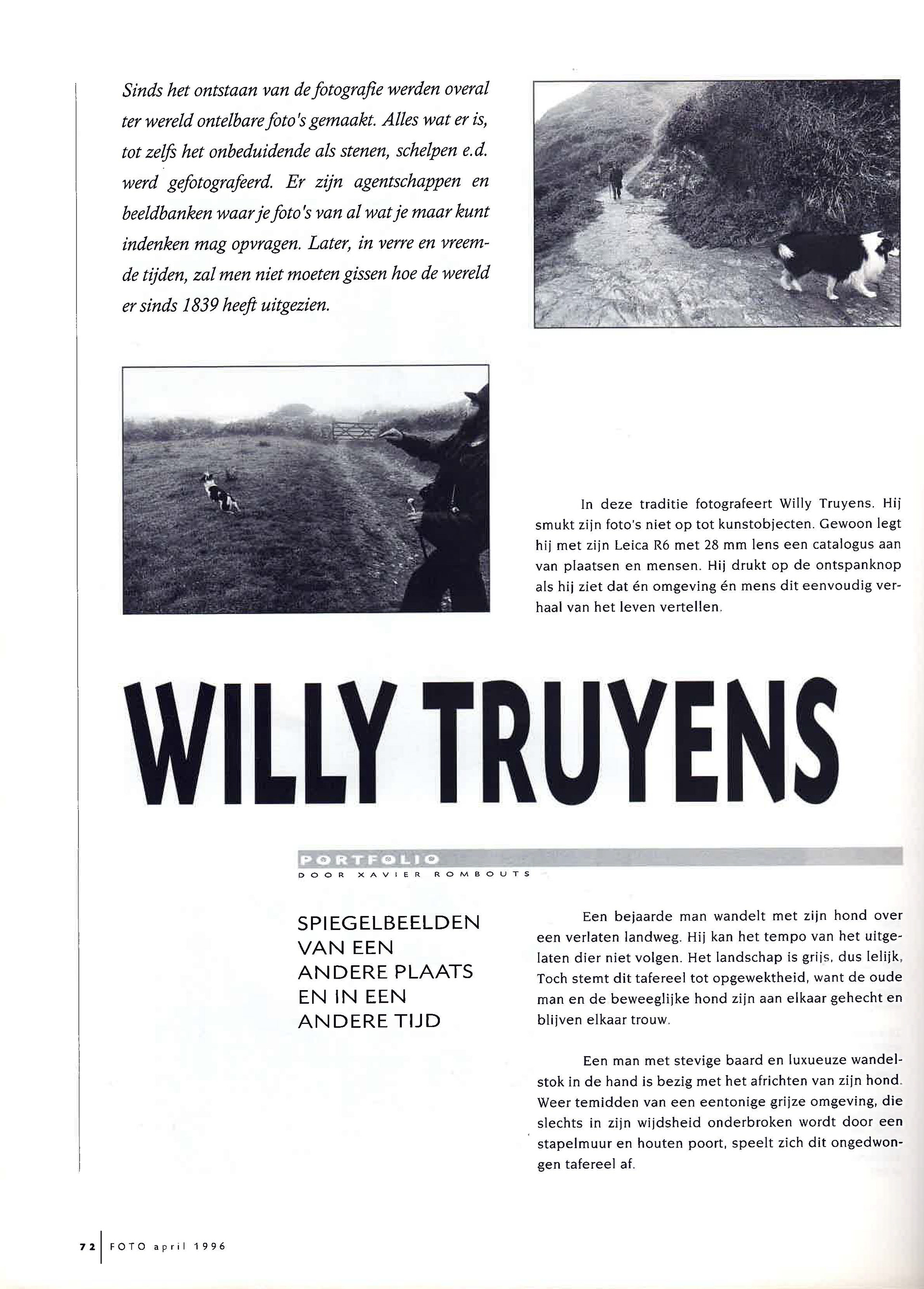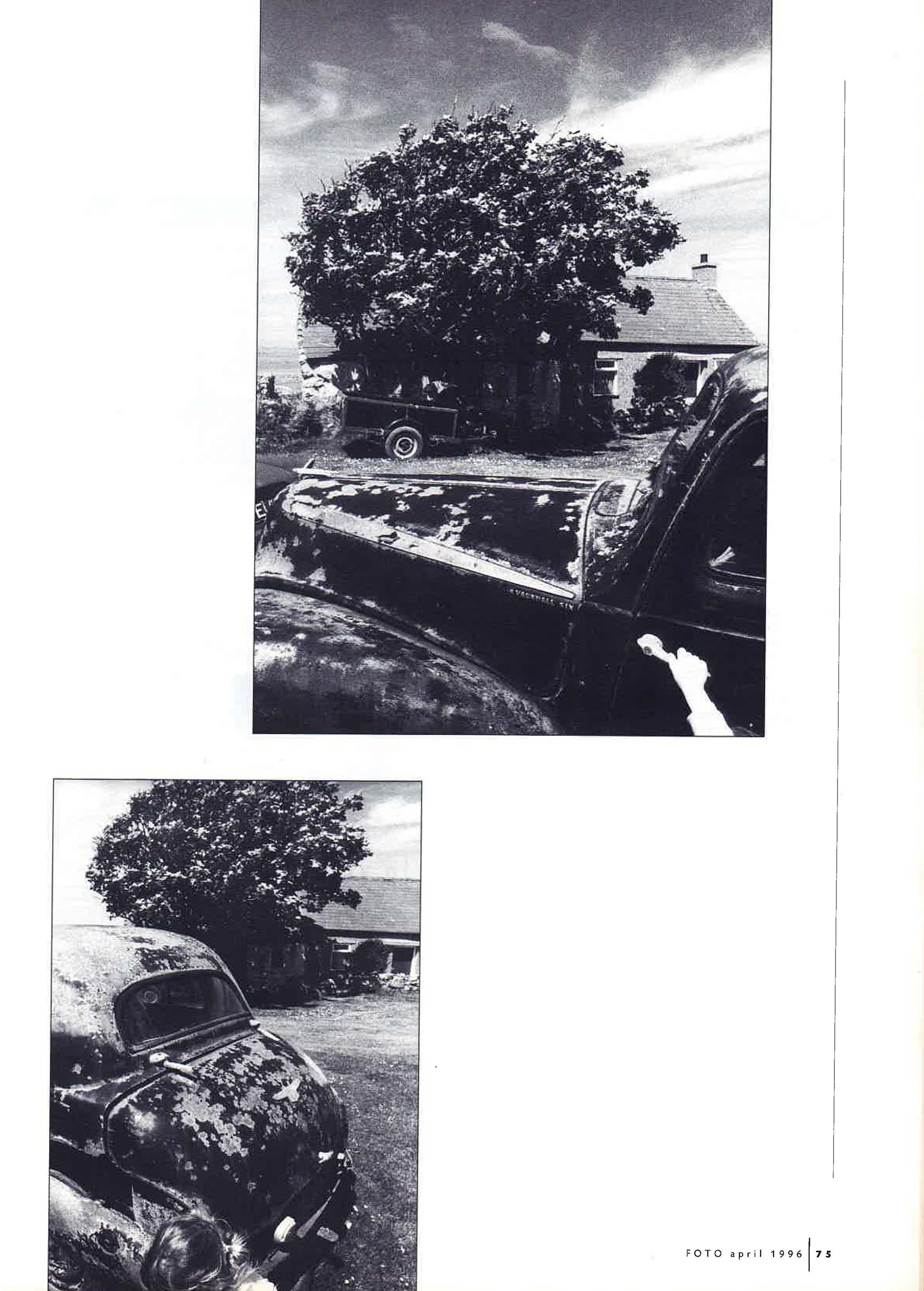De schoonheid van het alledaagse
De foto’s gaan niet over waar ik was, maar waarom ik er naartoe ga. Weg zijn uit het vertrouwde en met nieuwe ogen kijken.
In een vreemde omgeving zie je scherper. Mensen, landschappen, het alledaagse dat plots bijzonder wordt.
In een vreemde omgeving zie je scherper. Mensen, landschappen, het alledaagse dat plots bijzonder wordt.
The beauty of the ordinary
The images are not about where I was, but why I go there. Away from the familiar and looking with new eyes. In a foreign environment, everything becomes sharper. People, landscapes, ordinary hat suddenly feels extraordinary.
Biography
Born and raised in Turnhout, a small provincial town located in the north of Belgium near the Dutch border.
My father was an active member of the local photo club, that way I was introduced to the magic of the darkroom at a very young age. I still remember getting my first camera for my 8th birthday, a Kodak Brownie Fiesta, which still has a place in my studio.
My father was an active member of the local photo club, that way I was introduced to the magic of the darkroom at a very young age. I still remember getting my first camera for my 8th birthday, a Kodak Brownie Fiesta, which still has a place in my studio.
I studied Graphic Techniques at the VTST in Turnhout (B) where I learned all sorts of skills that can now only be seen in a museum, such as manual typesetting, working with an oversized repro camera, rasterizing photos for letterpress clichés, printing on a manual Heidelberg press, mixing chemicals for the photosensitive layer on offset plates, and so on... After this technical school, I studied photography at the Art Academy in Mol (B).
During my professional life, I worked as a Prepress employee and later as Graphic designer, where photography played a more functional role. During the weekends and holidays, I kept capturing the world and life around me on Tri-X and later with a digital Leica M.
And now that the professional commitments lay behind me, I have time to go and see Michael Palin's world with my own eyes.
And now that the professional commitments lay behind me, I have time to go and see Michael Palin's world with my own eyes.
Dutch FOTO Magazine April, 1996




MIRROR IMAGES
FROM ANOTHER PLACE
AND IN ANOTHER TIME
FROM ANOTHER PLACE
AND IN ANOTHER TIME
Text: XAVIER ROMBOUTS
April 1996
April 1996
Since the birth of photography, countless photographs have been taken all over the world. Everything there is, down to even the insignificant things like stones and shells has been photographed. There are agencies and image banks where you can get photos of anything you can imagine. Later, in distant and strange times, one will not have to guess what the world has looked like since 1839.
It is in this tradition that Willy Truyens photographs. He does not embellish his photographs into works of art. Simply, he catalogs places and people with his Leica R6 with 28 mm lens. He presses the shutter button when he sees that both environment and people tell this simple story of life.
An elderly man walks his dog on a deserted country road. He cannot follow the pace of the elated animal. The landscape is grey, so ugly. Yet this scene is cheerful, for the old man and the mobile dog are attached to each other and remain faithful to each other.
A man with sturdy beard and luxurious walking stick in hand is training his dog.
Again, this casual scene takes place amid monotonous grey surroundings, only interrupted in its vastness by a stacked wall and wooden gate.
A man with sturdy beard and luxurious walking stick in hand is training his dog.
Again, this casual scene takes place amid monotonous grey surroundings, only interrupted in its vastness by a stacked wall and wooden gate.
In another photograph, a woman short in her short white with skirt and the watching man behind her is very suggestively depicted. Together with her pitch-black dog on a leash, the woman stands in exciting contrast to the peaked gables of the houses, such as you see only in the English countryside.
Two photographs, one of a child dreaming while its mother and sibling walk on, the other of a happily jumping girl: very ordinary, but disarming in their simplicity. Pictures as a soothing, an almost comforting, nursery rhyme.
Two photographs, one of a child dreaming while its mother and sibling walk on, the other of a happily jumping girl: very ordinary, but disarming in their simplicity. Pictures as a soothing, an almost comforting, nursery rhyme.
The car, rusty, the little building behind it, dilapidated, bathed in a strange light. A child's hand tries to open the door. Then the child walks in the other direction. Both pictures evoke memories of a childhood where you could spend hours, alone or with your friends, dreaming away in a world on the other side of the mirror: like in the fairy tale of Alice in Wonderland.
On a grassland, a young woman raises a kite. A man in the distance calls something to her. A sign between them suggestively states 'Way Out'. Because life offers a lot of ways out, if we want to, to make something of it and to be happy.
On a grassland, a young woman raises a kite. A man in the distance calls something to her. A sign between them suggestively states 'Way Out'. Because life offers a lot of ways out, if we want to, to make something of it and to be happy.
Willy Truyens' photographs are descriptions of the steady passage of time, not hectic or turbulent, but ordinary and natural. The people who meet are content with each other's company. Relaxed, they enjoy the everyday.
It is pleasant to look at these pictures. They are atmospheric. The light is beautiful. The dark shades show a deep luster. Others evoke moods through their gray tones, such as you can only have in black and white photographs.
It is pleasant to look at these pictures. They are atmospheric. The light is beautiful. The dark shades show a deep luster. Others evoke moods through their gray tones, such as you can only have in black and white photographs.
